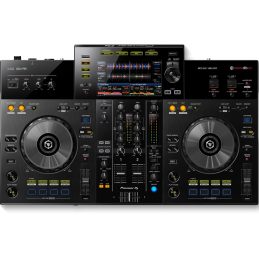
Understanding the basics of sound signatures and audio signatures is important as a DJ and musician. But the world of audio can be complex and filled with technical jargon and a range of terms that are used in, sometimes, seemingly different ways.
In this blog, we’ll break down what you need to know about audio and sound signatures and help you understand how they shape the way you hear music and how you can conceive of making new music.
Understanding the Sound Signature
Every speaker, headphone, and even room has a sound signature.
This is basically its unique fingerprint for sound. Think of it like how some voices are naturally deeper or higher pitched.
Sound signatures are created because no device perfectly reproduces all sounds. Some emphasise low tones (like bass) while others focus on high tones (like treble). The materials used, the shape, and how the device is built all play a role in this.
What is an Audio Signature?
Things can get confusing here.
While “sound signature” has a clear meaning (a device’s tonal fingerprint), “audio signature” is a broader term. It can describe the overall quality of a sound, including how clear, detailed, or distorted it is. This quality can be influenced by the sound signature, but it’s not the same thing.
Exploring the Spectrum of Sound Signatures
Now that we have more of an understanding of what a sound signature is vs an audio signature, let’s take a look at the spectrum of different sound signatures.
Balance
A balanced sound signature aims for as faithful a reproduction of sound across the entire frequency spectrum as possible. Instruments and vocals are presented in as natural a way as possible. The better the balance, the better for listening and the better for audio professionals.
Warmth
This signature of sound emphasises the frequencies at the lower end of the spectrum (i.e., bass frequencies). It produces a richer and fuller sound. For DJs working in the world of electronic music or hip-hop which are base-heavy genres, warmth is particularly important.
Brightness
On the other end of the spectrum, brightness is about boosting the high frequencies of the sound (i.e., treble). The crisp and detailed sound can be fatiguing in some scenarios but is preferred when used in classical music.
V-shaped Sound Signature
The V-shaped sound signature is a popular one that combines a boost in both bass and treble, i.e., low and high. There is a dip in the midrange frequencies which gives the sound signature its shape and therefore its name: It forms the shape of a V.
Why Understanding Sound Signatures Matters for DJs
There are many sound signatures, and different types of equipment are designed to create specific ones. This is why some DJ gear works better for genres heavy on bass, like hip-hop. Understanding these signatures isn’t just about preference for DJs; it’s a skill that helps you create smooth transitions and powerful sets.
Mixing Tracks
Mixing tracks often involves blending different sound signatures. Understanding a speaker or a headphone’s signature will help you better anticipate how the low, high and mids of different songs will sound together.
Adjusting EQs
Equalisation is an important skill for DJs to practice. Being familiar with sound signatures, especially V-shaped signatures, will help you more effectively adjust EQs to compensate for the dipped midrange and achieve a more balanced mix.
Reading the Room
Sound signatures can play an integral role in a DJ’s ability to read and react to the energy of a crowd in a room. The warm signature can create more bass-heavy and immersive experiences, while a more balanced signature can achieve greater clarity in genres along the lines of house and techno. The better you understand the sound system of signatures, the better able you will be to adapt to the setlist and make necessary adjustments.
Reacting to Different Environments
Sound and audio signatures can change based on different environments. If you’re in a club, on the road at a gig or in a studio, you may need to adapt your set-up to achieve a more balanced sound. Knowing how to optimise your space for your environment will separate you from amateur DJs.
Monitoring and Cues
The sound signature of your monitor headphones is of critical importance. You need to have a strong and accurate understanding of the representation of the music to ensure as precise mixing as possible and to cut up tracks smoothly and seamlessly.
Developing Your Sound
As an artist, you’ll be looking to craft your signature sound. Part of your branding and part of your journey is creating an iconic sonic experience for fans and audiences. The stronger your comprehension of different equipment, devices and subsequent sound signatures, the better position you will be in to develop the sound you are after.
Find Your Perfect Sound at DJ City
Knowing sound signatures makes you a better DJ. You can adapt to any crowd, genre, or venue by choosing the right equipment. It’s about using your knowledge to create amazing sets that truly resonate with your audience.
Need help finding the perfect DJ gear? DJ City has everything you need, and our experts can help you pick the equipment that matches your style and sound.









